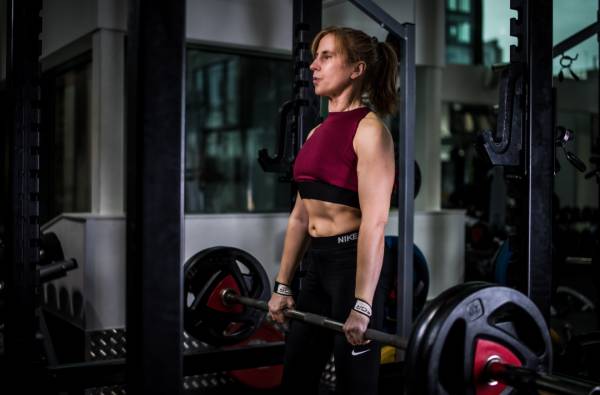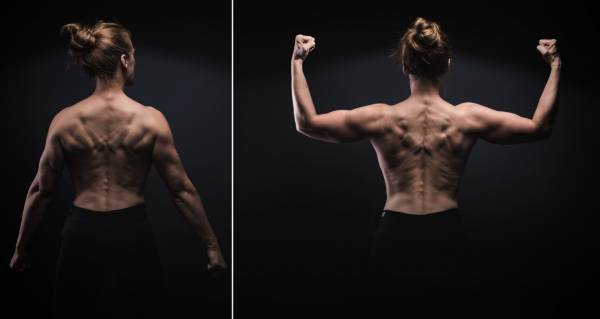As we age we expect to develop aches, pains, and reduced workout tolerance that prevents us from training the way we used to. Those of us who are female also have the added threat of menopause looming over us, with the assumption that fitness, youth, and appearance are all approaching a cliff edge.
As we age we expect to develop aches, pains, and reduced workout tolerance that prevents us from training the way we used to. Those of us who are female also have the added threat of menopause looming over us, with the assumption that fitness, youth, and appearance are all approaching a cliff edge.
Such decline is not inevitable however; if you change your thinking you could be turning in some of your best performances even in your fifties. I’m not saying it’s easy or that there are any guarantees, but if you’re motivated to work hard, hard enough to set you apart from the masses, then read on and learn a little about what worked for me.
Conventional Wisdom Is Limiting
Nowadays we have greater freedom of choice and better access to information than at any other time in history. We should be smashing through sports, health, and fitness barriers like never before. Yet in the area of physical training, we’re constantly bombarded by images, opinions, and beliefs that limit our potential.
Conventional wisdom informs us that:
- If you’re over 50 you’re in the grip of age-related decline and should downsize your training goals accordingly.
- As you age it’s normal to develop stubborn aches and pains in joints, or perhaps even severe pain and an osteoarthritis diagnosis. Accept that this is a normal and unavoidable part of aging and adapt your lifestyle accordingly.
- You need more recovery time when you’re older to avoid overtraining. It’ll be harder to build muscle, and harder to keep fat levels down.
And, if you’re also female:
- At any age, your strength, particularly upper body strength, is inferior to that of your male peers.
- You’ll build muscle at half the rate of men due to lack of testosterone.
- Looking sexy and skinny should be of paramount importance to you, unless you’re over 50 in which case you’re a lost cause; your primary goal in life should be to remain fit enough to play with the grandchildren.
- Be prepared for a catastrophic drop in performance and appearance when you hit menopause—you won’t be able to do anything about it so suck it up and lower your sights.
These beliefs are so pervasive and so deeply entrenched in everyone around us, including the experts in whom we often place blind trust, that it barely crosses our minds to challenge them. Yet, if we do challenge them, consistently and earnestly, many supposed limitations get swept away. My own story is a testament to that.
I Beat the Odds and Proved the Experts Wrong
Back in 2006 I was 42, leading a very active life and training for my 4th degree black belt in Shotokan karate. My training was interrupted by what seemed to be a mild performance-limiting injury, but one which refused to clear up. I went to a specialist who diagnosed it as a classic case of osteoarthritis of the hip. According to him, and almost everyone else I consulted, my training life was now over. Despite the overwhelming weight of expert opinion, I couldn’t accept that was the case; the problem felt like it was rooted in muscles and in soft tissue, not in my joints.
This sudden adversity gave me the jolt I needed to address all the little things I’d noticed during my 20 years of training: imbalances in strength, range of motion, and other anomalies in certain movements. Previously I’d dismissed them as being unworthy of my attention; they’d seemed so minor, and the time and effort required to correct them would have meant less immersion in the stuff I enjoyed. Now faced with the loss of my active life, I wasn’t about to overlook anything that might help.
I spent the next ten years trying to find a solution to my condition. At times I was in a bad place; I went through periods of crippling pain in most of the joints in my body and even succumbed to obesity. Eventually, the breakthrough came when I realized that my problem stemmed from a whole-body muscle imbalance rooted in my core muscles. This was not a joint disease rampaging through my body, this was a treatable condition, and I’d gained sufficient knowledge to administer that treatment myself.
What I learned in my fight against osteoarthritis caused me to question much of the accepted wisdom about training and performance, especially where age-related decline and gender related predictions are concerned.
Fast Forward to 54 Years Old
Now I’m training longer, harder, and recovering faster than at any time in my life. I’m training at a level that most people half my age can’t sustain, especially men, who tend to recover more slowly and burn out more quickly. For a while now I’ve been building volume, intensity, and frequency of training. Currently I train twice a day for six days of the week then a single slow cardio session of 90 minutes on the seventh day. These are all hard sessions, typically lasting for between one and three hours. I’m constantly getting new personal bests, losing fat, and increasing lean mass.

I’m now stronger than I’ve ever been and all my joints are coping fine with heavy loads.
My upper body strength is particularly good. My neutral grip pull up one rep max is nearly 150% of my body weight. My lower body strength is lagging; I had bigger problems to overcome with my lower body, but it’s still good compared to norms for my age and gender. My core isn’t balanced enough for heavy squats and deadlifts, yet. There’s still a risk of my spine twisting and bending while under load. However, I’ve managed machine hack squats weighted with 440% of my body weight and rack pulls at 240%, proving that my supposedly decrepit hip, spine, foot, and shoulder joints are coping perfectly well with heavy loads.
I’m now three years post menopause and the only difference is that my moods are more stable than previously. That in itself has had a positive impact on every aspect of my life, including training. I’m now more consistent, there is no sign of that dreaded middle aged spread, no downturn in performance, and I haven’t shriveled up like a wrinkled prune. I’m still building muscle and cutting fat on an average of 2800 calories a day.
I still have some imbalances holding me back, however. Specifically, one side of my core is still dominant; when I get tired or push beyond my limit the dominant side starts to take over, twisting and bending my spine and causing abnormal movement. My solution? I’ll keep working at it and eventually the two sides of my body will rebalance. I see this as a positive thing; I’m doing great now at age 54, yet there’s still more to be unleashed when I eliminate the last remnants of the imbalance.
My intention is to keep testing my limits, improving mechanics and function, and get new PB’s for many, many years to come. My passion is calisthenics and I’m working hard on skills such as human flag, levers, muscle ups, and single arm pull ups. Bodybuilding provides a foundation for my training, but it’s my own spin on bodybuilding, with the main focus being to restore then maintain perfect balance and function.
You Can Do It, Too
When I shared my osteoarthritis story online I was inundated with requests for help, and I was able to help others achieve similar results. People were actually telling me that after following my approach they’d cancelled hip replacement surgery, stopped taking pain relief medication, and were now leading full and active lives. Even more interestingly, people were finding the approach helped not only with hip osteoarthritis, but also things like hip impingement, SI Joint problems, and general aches, pains, and sore joints.
My personal case clearly wasn’t a fluke; it was a strong indication that many symptoms of so called age-related decline, potentially including menopause symptoms, are actually the result of fatalistic thinking. Change your attitude from ‘accept the inevitable’ to ‘find a solution’ and good things will start to happen.

The Problem with Experts
Here’s the rub, however. In my experience there is no ‘expert’ you can employ to do the problem-solving for you, and here’s why.
Our world is heavily focused on economy of scale; the best bang-for-buck lies in solutions that have the broadest application and highest rate of success. In the case of doctors and physios, who are often battling limited resources and poor patient compliance, this means setting aside research into treatments that aren’t viable for the majority of patients. The same thinking pervades nearly every aspect of modern life; sport, fitness, and physical training are no exception.
Though various professionals may have answers to small parts of the puzzle, they’re so constrained by their business model that they can’t deal with the full, unique combination of problems that a non-standard case presents. No matter how well intentioned, ultimately they’ll divert you onto the same well-worn path that serves the majority cases.
If you’re squarely in the mainstream and you’re happy to stay there, then the prevailing advice is likely to be a good fit for you. For the minority, those willing to move heaven and earth to fulfill their true potential, the best possible results will come not from blind acceptance, but from questioning, researching, and experimenting for yourself. In short, learn to become the leading expert in your own training and you’ll find that many of the limitations you think you have just aren’t real.
Be Your Own Expert
It’s not easy, but no matter how lost and uninformed you are when you start, if you have tenacity and faith in your ability to learn, you can succeed. The information you need is readily available online and easy enough to understand if you’re prepared to spare the effort; you may have to wade through sale pitches to get to it, but it’s there.
I’m not suggesting that you can’t recruit expert help, but you need to stay in the driving seat and be clear about the aspects of your training for which they should be responsible. Remain objective and periodically reassess how much they’re helping you; when you’ve got all you can from a given professional, don’t be afraid to move on.
My Continuation of Perspective
In future articles I’ll go into more detail about how I beat the limitations placed on me, and take a look at research challenging the commonly held beliefs that may be putting an artificial limit on your goals. I’d also love to share my thoughts and experiences on working with professionals and hopefully give them some ideas on how to better serve the biggest, wealthiest, and most dedicated demographic, the baby-boomer generation. My generation.
You might also like:






